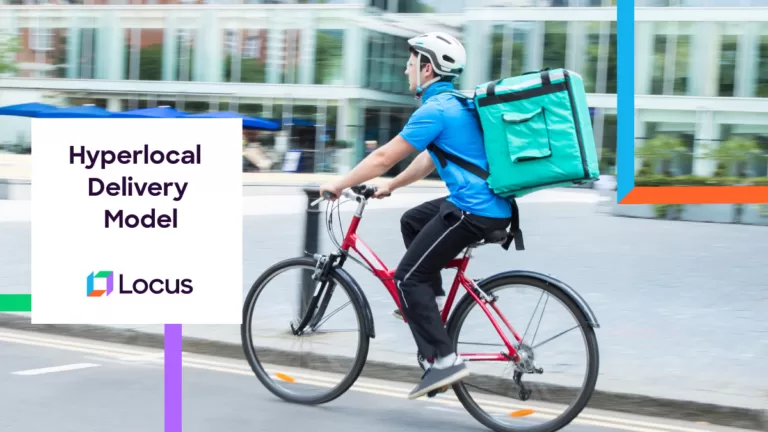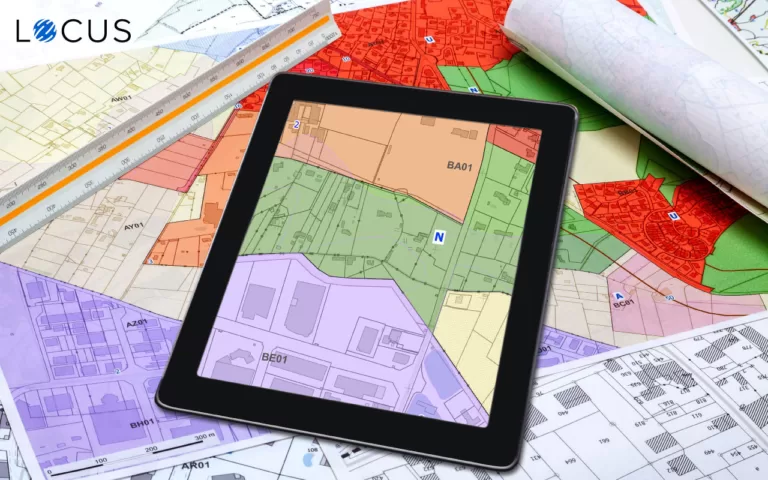E-Commerce, Route Optimization
How Logistics Optimization Software Helps Businesses Manage Peak Shipping Seasons like Ramadan
Apr 28, 2021
9 mins read

38% of Indonesians are impulsive shoppers – Understanding the mobile Ramadan consumer, Ramadan Insights 2020, InMobi.
33% of Indonesians make their purchases during Ramadan- Understanding the mobile Ramadan consumer, Ramadan Insights 2020, InMobi.
The holy month of Ramadan has just begun during this intense COVID-19 pandemic. The supply chain has started to witness a surge of demand for different consumer products. As the coronavirus persists, customers prefer to stock up commodities in advance. Hence, this season creates a huge work burden for the logistics industry.
The biggest challenge for a logistics manager is to supervise and manage Ramadan logistics operations. Especially, logistics managers in the high-demand industries feel more pressure to keep up with the demand spike during this peak delivery period.
Many of their supply chains are entirely manual and are vulnerable to human errors. These regions have some delivery challenges to be overcome to make their logistics operations successful during Ramadan.
The majority of the Southeast Asian countries have rural roads that are minimally paved with unclear signage. Their infrastructure fails to cope with the growing pace of e-commerce demand among the consumers. This challenge calls for a big step from the logistics businesses in these two regions.
The Effects of Ramadan on Retail: How to Optimize Business for Seasonality of Demand

The COVID-19 has increased the migration of customers from brick-and-mortar stores to online platform-based services. Beyond exposing weak systems and processes of many businesses, it has raised the importance of investing in supply chain continuity for long-term operations.
With the COVID-19 pandemic putting increased pressure on the resources of various businesses, they require a tool to manage peak delivery periods like Ramadan effectively. A logistics optimization software is the right setup that can help them manage all operational and business constraints and get their tasks done.
A logistics optimization software plays a crucial role in ensuring a smooth and seamless logistics process.It helps companies counter stuck shipments or delivery delays to provide an efficient logistics and fulfillment system.
Check Out: The New Fulfillment Models in Logistics
Here’s how logistics optimization software enables businesses in the Middle East and Southeast Asian regions to manage their peak deliveries during Ramadan successfully.
Improve Customer Loyalty
During Ramadan, the biggest hindrance for businesses is delivery delays and lack of communication about the current parcel status. These can frustrate customers and lead to churn while also impacting the brand image.
The biggest priority for businesses throughout the Ramadan month is to ensure a good customer experience. In regions like the Middle East, reduced working hours and congestion in the roadways can cause unexpected delays. For smooth logistics operations and improved on-time deliveries during this period, a logistics optimization software is the right solution.
A logistics optimization software builds optimal routes factoring constraints like traffic, delivery windows, driver skills etc. These optimal routes enable drivers to cover the maximum number of delivery locations within a stipulated time frame. It helps brands improve their on-time delivery performance, thereby winning customer trust and increasing brand reputation.
Makes Navigation Easier
Many regions in Southeast Asia and some regions in the Middle East have a lot of geographical irregularities. Also, many areas do not have proper formal postcodes.
Dealing with these issues manually makes fulfillment operations costly and inefficient, and leads to dissatisfied consumers. An effective tool is the need of the hour to manage these crucial delivery hiccups.
A logistics optimization software is the intelligent choice that enables drivers to easily find the delivery locations. Its geocoding engine converts improper addresses into precise geographical coordinates, thereby helping them reach specific locations on time.
Use the most advanced address and geocode verifier for driving efficiency in location intelligence – one of the most critical building blocks of logistics optimization. Explore Locus AccuPin!
Counter Delivery Complexities
In a country like Indonesia, deliveries are relatively tougher to execute due to the geography. For instance, a parcel travelling from Jakarta to Bali has to go through a road, boat or plane etc. These geographical challenges coupled with the usual delivery complexities like driver skill, customer-preferred time slot, traffic, etc., makes routing really tough and by extension customer experience takes a hit.
Supply chain visibility is the biggest asset when it comes to navigating complex supply chains. The ability to track a package gives customers confidence. The increased adoption of technology is enabling increased visibility. Route optimization can help deal with both geographical challenges and delivery complexities.
A logistics optimization software helps businesses to pin down even remote and rural addresses. It takes into account all geographical constraints like traffic, road closures, or vehicle downtime to come up with cost-efficient and time-saving routes. These routes help the drivers and fleet managers reduce the turnaround time of vehicles, thereby saving last-mile delivery costs.
Delivery logistics software provides regular real-time alerts and notifications on the parcel’s location. This timely information with a consistent on-time delivery performance helps businesses retain their trust with customers. It maximizes the visibility of logistics operations internally to managers, and externally to customers.
A logistics optimization software helps businesses increase their capacity, time and distance utilization of fleets while reducing errors arising from manual processes.
Managing Returns Effectively
During peak delivery periods like Ramadan, there are logically higher returns as well. In the flurry of parcels being delivered, the biggest challenge for logistics companies is to manage returns effectively. Proper returns management is crucial for attaining higher revenues and profitability during peak delivery periods.
Peak delivery periods are filled with ad-hoc delivery and return requests for the entire fleet. Improper management of these ad-hoc requests leads to delivery delays, reducing On-Time In-Full (OTIF) performance.
A logistics optimization software automatically and dynamically reroutes the delivery schedule of drivers within seconds when ad-hoc delivery requests are assigned. This helps fleet managers to reallocate tasks quickly based on driver skill sets, Hours of Service (HOS) delivery windows, driver availability and vehicle capacity and ensure that drivers are not burdened.
Using this dynamic rerouting feature, logistics companies can save costs and time during the peak delivery periods like Ramadan. It helps them keep their logistics channels robust, thereby facilitating fast replacements and effective management of returned inventory.
Predict the Operational Capacity
Ramadan shopping has already begun and customers have advanced their shopping plans because of the COVID-19 pandemic. Due to the sudden rise in demand for online shopping, logistics managers should plan for the increased operational capacity. Without proper operational resources, it is impossible to manage peak deliveries successfully and effectively.
A strategic planning tool is necessary to prepare a holistic fleet mix plan that can suit a fleet manager’s business needs. It helps them intelligently plan the future fleet requirements for a month, quarter or year and become future-ready.
The fleet mix planning feature in a logistics optimization software helps businesses to model their varying fleet combination strategies. It provides the right fleet combinations based on numerous demand scenarios. It enables them to book fleets in advance eliminating hidden inefficiencies, and ensuring cost savings, leading to efficient fleet planning.
Logistics optimization software provides static delivery plans and practical fleet combinations from historical data and demand forecast statistics, thus improving logistics operations. It helps them face erratic fluctuations of customer demand during peak delivery periods, without incurring high logistics costs.
Assigning the Right Personnel for Delivery Tasks
The major chunk of success from peak season logistics depends on assigning the right personnel for deliveries. For an improved on-time delivery performance during peak logistics seasons, it is crucial to assign routes to drivers who are familiar with that area. In Southeast Asian regions, this helps businesses easily manage geographical irregularities.
The perfect blend of drivers’ real-world knowledge on the delivery zone and technology helps companies counter the geographical irregularities and delivery complexities effectively. A skilled driver with perfect knowledge of a delivery zone can easily manage deliveries during rush periods like Ramadan.
A logistics optimization software has a rider allocation feature that assists fleet managers in preparing delivery schedules based on driver skill sets. Factoring in driver knowledge, worktime, availability, break hours, it generates the best optimal plan for the delivery tour. It effectively groups the profitable routes and suitable riders, thereby ensuring on-time order fulfillment.
Utilizing a logistics optimization software helps fleet managers to also draw geographic zones and associate drivers/vehicles with them. It ensures that field professionals complete the maximum number of deliveries within the allocated time slot.
Contactless deliveries
In both the Middle East and Southeast Asian regions, the COVID-19 pandemic is at its peak. As more and more cases increase in these regions, the need for contactless deliveries also increases.
Electronic Proof of Delivery software enables logistics companies to effectively execute contactless deliveries. It helps them collect digital signatures of customers and authenticate completed deliveries without their physical presence. This software enables transparent acknowledgement of deliveries to customers and managers without any paperwork, calls or messages.
Conclusion
The COVID-19 pandemic has exposed the fragilities in the supply chain of the Middle East and Southeast Asian regions. Given that the holy month of Ramadan is a peak season for companies, it would be a prudent choice to use innovative technologies that enhance efficiency, reduce cost and build resilience in the supply chain.
Locus Delivery Logistics software enables businesses to achieve on-time deliveries with their limited operational ability. It automatically develops dynamic route plans that help the drivers and logistics professionals manage the delivery fluctuations during the peak shopping season. It assists them in executing frictionless deliveries, thereby improving their resilience.
References
Infographics:
![[Infographics] Ramadan & Raya: 7 Ways for Handle Peak Shipping Season](https://locus.sh/assets/img/infographic/resources/ramadan-and-raya-optimize-shipments-during-peak-season.jpg)
Infographic by Locus
Share this infographic by using this embed code:
<a href="https://blog.locus.sh/how-to-manage-peak-shipping-seasons-like-ramadan/" target="_blank" style="text-align: center; display: block;"><img src="https://locus.sh/assets/img/infographic/resources/ramadan-and-raya-optimize-shipments-during-peak-season.jpg" alt="[Infographics] Ramadan & Raya: 7 Ways for Handle Peak Shipping Season" style="width:100%;height:auto;max-width:750px;margin:auto;"></a><br/>Infographic by <a href="https://locus.sh/">Locus</a>Related Tags:

Last Mile Delivery Optimization
Hyperlocal Delivery Model: Evolution and Innovation of Neighborhood Deliveries
Updated on: Feb 16, 2023 The hyperlocal services market size was valued at $1,324.2 billion in 2019 and is estimated to reach $3,634.3 billion by 2027, registering a CAGR of 17.9% from 2021 to 2027. – Allied Market Research, Hyperlocal market services by type, 2021-2027 The past few years have seen convenience play a big […]
Read more
Route Optimization
Eight Important Questions to Ask Your Sales Territory Planning Vendor
2020 gave the biggest boost to online selling, and brands across industries have embraced various omnichannel selling models to keep up with customer expectations. But for a retail or consumer goods company, a large chunk of revenue predominantly comes from goods that are sold at retail stores spread across multiple locations, catering directly to the […]
Read moreMOST POPULAR
EDITOR’S PICKS
SUBSCRIBE TO OUR NEWSLETTER
Stay up to date with the latest marketing, sales, and service tips and news


How Logistics Optimization Software Helps Businesses Manage Peak Shipping Seasons like Ramadan